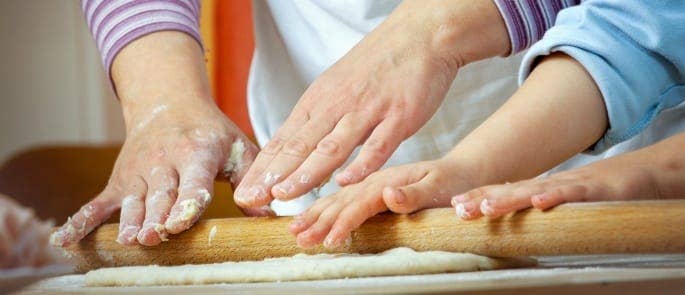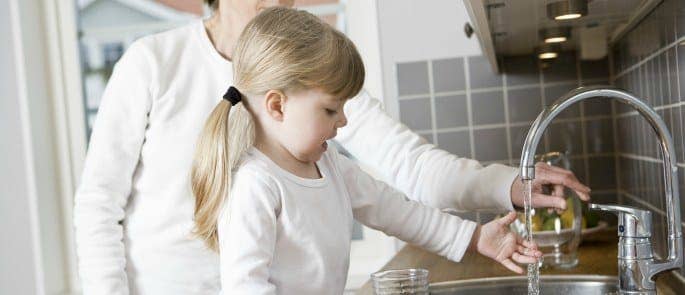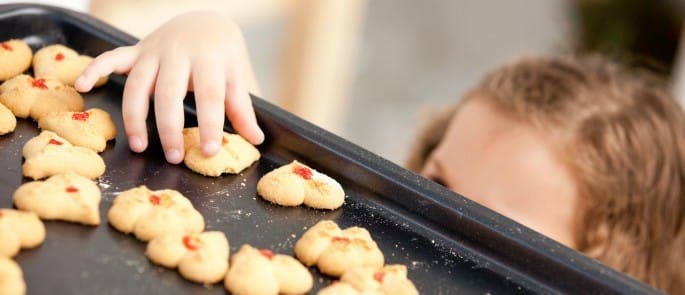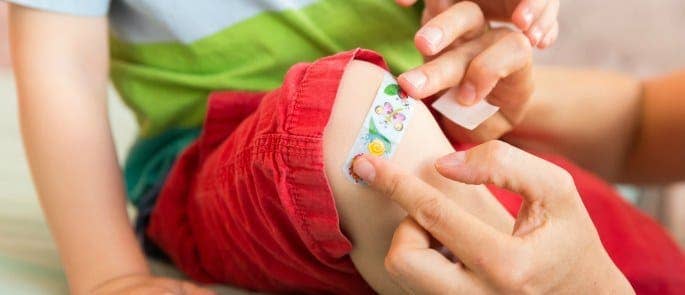10 Kitchen Safety Rules that Children Need to Know
Apart from being an essential life skill, cooking is a fun way to spend time with your children – and it can get fussy eaters interested in trying new, different, and healthy foods.
Kitchen hygiene might not seem as exciting to them as a batch of freshly baked biscuits, but it is essential for your children to know it.
There are 500,000 cases of food poisoning a year in the UK, and as you may well know, food poisoning is not pleasant. Teach your children the basics of kitchen hygiene and safety to prevent upset tummies, cuts and scalds.
10 Kitchen Safety Tips for Little Cooks
1. Always supervise children
This is especially important when you have younger children, who must be supervised at all times. It’s good practice to supervise your adolescent chefs too – even if you’re teaching your teenager how to roast their first Sunday dinner. You’ll be surprised at the amount of knowledge a novice chef requires.

Younger cooks will require vigilant supervision. You’ll need to perform certain tasks, such as cutting and peeling, for them. Take this opportunity to demonstrate the correct way to hold and use dangerous kitchen equipment.
2. Have a fire safety conversation.
It’s important to stress to young children the basics of fire safety.
Flames can be attractive so it’s important to stress the importance of staying away from open flames.
Equally, you should emphasise the importance of keeping pan handles away from flames and turned away from where they may get knocked.
Inform your child when it might be necessary to call 999 and what to do if a fire does start. Tell your child that if they see smoke or fire, they should inform an adult and evacuate immediately, and if the room is full of smoke, they should crawl to evacuate the room.
3. Wash hands.
This might sound obvious but it’s crucial. You should highlight the importance of hand washing to your child so that they develop great kitchen hygiene habits.
Teach your children the correct way to wash hands. Many children (and even adults!) are unaware of the proper way to wash hands. It should take at least ten seconds to wash your hands.

Furthermore, make your children aware of when to wash their hands. They should always do so after touching any raw meat or poultry to prevent cross contamination.
4. Pass on your knowledge.
Children and adolescents are not always aware of crucial and basic kitchen safety information. Therefore, you should take time whilst you’re baking or cooking with them to pass on your crucial safety knowledge.
For instance, children might be unaware that:
- Metal and aluminium should never be placed in the microwave as they can cause fires.
- Plastic should never go in the oven.
- Water should never be added to a pan full of hot oil. It may splatter and could cause serious burns.
This is the kind of safety knowledge that is vital, yet they may not be aware of.
5. Prevent cross contamination.
Cross-contamination is straightforward to prevent if you know what to do and what not to do. For example, you should never wash raw meat, because any spills or splashes on surfaces could become contaminated with campylobacter. This bacteria causes the most instances of food poisoning in the UK.
All surfaces and utensils that have come into contact with raw meat should be washed.
It’s also a good idea to ensure your child knows how to identify when meat or chicken is ready. Show them how to use a meat thermometer. When using a thermometer, they should insert it into the thickest part of the meat and wait until the temperature is stable.
6. Wipe up mess and spillage immediately.
It might be too much to ask to get young children, or even teenagers, washing up as they go, but they’re not too young to clean up spills and mess. Spills are a huge slip risk and should be cleaned up straight away.

7. Wear appropriate clothing.
Roll up those sleeves, get your apron on and your oven mitts at the ready. Make sure your children don’t have dangly jewellery or loose flowing sleeves, and keep long hair tied back. It’s also a good idea to pop shoes on, in case things get knocked or hot liquids get spilt.
8. Teach younger children how to store food correctly.
Refrigerated food should be stored between 0 °C and 5 °C so that bacteria can’t thrive.
It’s a good idea to show older children the correct way to store food items. A well-managed fridge should have space in between food items so that air can ventilate the fridge correctly. Often, fridges have specific areas for vegetables and raw meats, so make sure to show your children where everything should go. These areas are designed to help get the most out of your food, keeping it better preserved and fresh so that it lasts longer.
9. Create ‘off-limit’ zones and utensils.
If you feel that your child is too young to use dangerous utensils or kitchen equipment, explain to them the dangers and let them know that they should always ask an adult to help them use these items.

10. Teach your child basic first aid.
Show your child when to use plasters and where you store them, as well as how to treat minor burns by running cold running water from a tap over the burn for ten minutes. After this, they should remove any jewellery or clothing near the burn and wrap it in Clingfilm to keep clean.
Further Resources:
- Food Hygiene Quiz for Kids
- Free Food Hygiene Posters for Primary & Secondary Schools
- Free Food Hygiene Worksheets for Children
- A Vegan Grocery List
- Health and Safety in the Kitchen Quiz
- Healthy Eating Guide for British Teenagers
- Healthy Eating Quiz for Kids
- Online Food Hygiene Training







